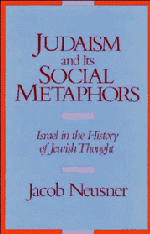Book contents
- Frontmatter
- Contents
- Preface
- List of Abbreviations
- Introduction
- 1 Imagining Society, Re-visioning “Israel”
- PART I “Israel” in the First Statement of Judaism, 70–300 C.E.
- PART II “Israel” in the Second Statement of Judaism, 300–600 C.E.
- PART III Same Metaphors, Other Systems
- 11 Other Judaisms and Their Social Metaphors
- 12 Society and System
- General Index
- Index to Biblical and Talmudic References
11 - Other Judaisms and Their Social Metaphors
Published online by Cambridge University Press: 04 August 2010
- Frontmatter
- Contents
- Preface
- List of Abbreviations
- Introduction
- 1 Imagining Society, Re-visioning “Israel”
- PART I “Israel” in the First Statement of Judaism, 70–300 C.E.
- PART II “Israel” in the Second Statement of Judaism, 300–600 C.E.
- PART III Same Metaphors, Other Systems
- 11 Other Judaisms and Their Social Metaphors
- 12 Society and System
- General Index
- Index to Biblical and Talmudic References
Summary
“Israel” and the Social Rules of Judaisms
In investigating the theories of “Israel” presented by the documentary evidence of that Judaism, I propose to outline the rules that govern thinking about the social entity, or social thought, of one important religious formation. I aim at establishing some rules, which can be tested in the study of other Judaisms and other religious systems entirely. I have a very particular question in mind. What I really want to know is where, when, and why a given systemic statement will invoke one metaphor, and the conditions in which a different metaphor proves compelling. Furthermore, I should like to find out what images, issues, and points of self-evidence follow in the retinue of a regnant metaphor. In asking, for the social thought of Judaic systems, why this and not that, I therefore propose to enter into processes of thought concerning the social consciousness of a given group, as important statements of that consciousness come before us. Rules of this kind are proposed in this chapter, and they generate their own hypothesis.
What can we say about the modes of thought of that social group, the sages who constituted the authorship of the canon of the Judaism of the dual Torah? Not social facts, out there, but imagining society, in here, yielded the sages' categories and definitions. Specifically, sages began within, in imagination, and drew for detail upon their inner vision.
- Type
- Chapter
- Information
- Judaism and its Social MetaphorsIsrael in the History of Jewish Thought, pp. 207 - 238Publisher: Cambridge University PressPrint publication year: 1989



